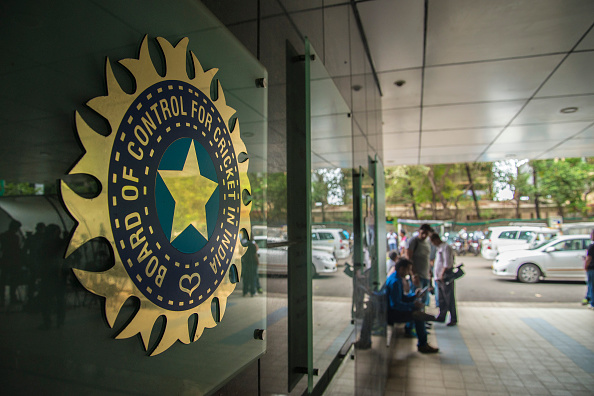Truthful Tuesday | BCCI has left the ‘villainous’ tag behind

Getty
The first word that comes to everyone’s mind by hearing BCCI’s name is ‘villainous’, the richest cricketing board, the one that is corrupt to the core and totally on the negative side of the scale. On a truthful Tuesday, we are here to prove that there is more than what meets the eye.
Very often, the BCCI has become synonymous with ‘money,’ ‘political power,’ and cricketing audacity to stamp authority on the other boards. Every Indian article that is closely linked to the cricketing board and money can be traced back to the famous words of the late Mansoor Ali Khan Pataudi. “If the International Cricket Council (ICC) is the voice of cricket, the Board of Control for Cricket in India (BCCI) is the invoice of cricket,” admitted Pataudi in 2010, a time when the BCCI were slowly yet steadily feeding on the money to become the monster that we know them to be today. It could all be easily traced back to India’s first involvement as a member of the ICC, the mastermind Jagmohan Dalmiya. The first Asian president captured the confidence of the sub-continental countries and made them visible on the map, almost two decades after India lifted the 1983 World Cup. After that, it was India’s regime, slowly gaining all control points for the major prize, ‘world cricket.’
The monster that when pitted against the other cricketing board is like Gulliver. And, India is Brobdingnag, the place which is known to be the land occupied by giants. Gulliver’s biggest cash-cow here is the Indian Premier League - the same league that was formed on the success of the T20 World Cup in 2007 where a charismatic Indian skipper MS Dhoni lifted an ICC trophy after 24 years. As per the report made by Duff & Phelps, the global valuation and corporate finance advisors, the IPL reached a brand value of Rs 47,500 crore in 2019 from 41,800 crore in the previous edition.
However, the lenses are often smeared with dirt and dust that restricts us from looking at the clear picture. A picture that has been tainted for all the wrong reason despite it being a masterpiece. In reality, the BCCI isn't that villainous as some of the cricketing boards claim it to be. Not even as villainous as some of the countries who claim themselves to be the flag-bearer of the sport. And it is time for us to wipe the lenses clean to look at the clear picture that is so much on the wrong side of everything, news, social media and criticism.
BCCI’s initial contact with a Test-playing national was even before the heinous tag attached to them, of being ‘villainous,’ in 2009. In the age and time of Whatsapp forwards, we tend to ignore some hard-hitting facts. And, here, just in the span of a long-forward message on a family group, I present you the facts that could just prove its point itself. However, I will hang around, to make sure that the point is here and there and everywhere to stay when we have a repeat of the ‘2012,’ disaster.
The meeting for Zimbabwe’s redevelopment
The BCCI is just looking for money after the IPL hit its second successful season. It is true that the board was after money and who would not after having masterminded one of the best T20 leagues in the world. If you did let that slip through your fingers, you could never be part of the major players in the cricketing world. However, there is that one catch that is attached with money that the BCCI put in the same efforts back into the game. In 2009, the BCCI extended their hand to help in the redevelopment of Zimbabwe cricket. And this was just not the first sign of what the BCCI had in store for the development of the game when it was not necessary on their part to put their foot forward for the African nation.
“The meeting was to discuss the role the BCCI can play in the redevelopment of Zimbabwe cricket in the years to come,” the Indian board said on 23 January 2009.
As a result, a Zimbabwean President’s XI was allowed to enter the Deodhar Trophy one-day series and followed it with another appearance in the following year’s Duleep Trophy first-class tournament. These were all part of the Indian domestic calendar, amidst the development of Indian cricket, they extended their support to the African nation. Further, the BCCI also were in full-power support, extending facilities at the academy for the training of Zimbabwe players. Since then, India have played 11 ODIs against Zimbabwe and every time have played the series away from home, allowing the home nation to bank on the revenues. In the same timeframe, the other two members of the Big Three have played a combined ZERO bilateral ODIs against the African nation. And until 2019, they have been successfully helping them in their own proficiency, be it hosting their camps, be it playing against them. It was only after ICC put an end to Zimbabwean cricket, the BCCI had no choice but to make changes to their scheduled 2020 T20I series with Sri Lanka.
Afghanistan’s bread and butter
While Afghanistan Cricket board were providing the country with the needed butter, they still needed a base or a bread where the butter could be applied. The base, the bread, India’s very own Greater Noida stadium. It was essentially where the next-gen superstars such as Rashid Khan and Mujeeb Ur Rahman all made their first impressions. If not for Greater Noida and the support from the BCCI, Afghanistan would have had to spend a few more years, trying to convince the other cricketing nations to travel to the war-prone country, where they could have a peaceful game of cricket. Much like being a monk in the middle of a minesweeper. However, the monk was guided to the cricketing temple, India, which became a holy grail for Afghanistan Cricket.
In 2008, they were still playing Division 5 of World cricket, before making their ascends to the greatest stage of world cricket- the Cricket World Cup in 2019. The marquee event where they competed against the likes of nine Test-playing nations, achieving some of the squad members’ life-time experiences. Crucial to this was India if Afghanistan is considered as of the ‘Test-playing nations,’ it is because of three words- India, BCCI and Bengaluru. Three words that would be etched in the hearts of all the Afghan fans, the supporters and the government, which knows BCCI stood by time through the thick and thin.
14 June 2019, Afghanistan’s skipper Asghar Afghan walked out alongside Indian skipper Ajinkya Rahane. It is true that India were missing some of the key players, that included Virat Kohli. However, it is not true that they played with a second-string side, they the entire team ready to rumble against Afghanistan. After starting with the shortest format, it was the first time that they switched to the longest one, with India still being one of the pillars of strength for the otherwise, war-prone Asian country.
According to a Quint report, India’s apex board pledged to assist Afghanistan’s junior teams to play in India as well as providing assistance for the improvement of facilities. Facilities that included, coaching, umpiring and other technical support roles. The BCCI has also pledged to assist junior teams from Afghanistan to play in India, as well as provide assistance for the improvement of coaching, umpiring, and other technical support roles. Alongside this, the Indian government recently provided $1 million for the construction of a cricket stadium and adjoining facilities in Kandahar. And, ever since then, India has continued to pledge their support to the Afghanistan side.
Bangladesh’s relationship with BCCI goes back a decade
Donnie darkoing my way back to the start of the article, in 2000, Jagmohan Dalmiya’s admission as ICC’s president paved the way for a rise in Test status for Bangladesh. They became the 10th nation in the process to be recognised as a Test-playing nation. The invitation to play the neighbours in a one-match Test was mouth-watering and the first of many Tests for the now ninth-ranked side in the Test rankings.
"Others would say he (Jagmohan Dalmiya) recognised the kind of passion that people in Bangladesh have for the game and, in the long run, the sport would benefit hugely from that," journalist Dileep Premachandran wrote in his blog then.
India’s aggressive campaigning for the inclusion of the Bangladesh team as a Test-playing nation was the first stone on the foundation of Bangladesh’s cricketing pillar. This had occurred just years after Dalmiya paved the way to put up a trio of Asian countries at the helm in World Cricket - India, Pakistan and Sri Lanka. And, it was the subcontinent that hosted the 1996 World Cup, with Sri Lanka salvaging the pride, and earning the plaudits for a famous victory over the mighty Aussies.
On 10th November 2000, India took on Bangladesh in an over-crowded Bangabandhu National Stadium in Dhaka. The result, however, never mattered, as it was the Tiger’s first appearance in the longest format of the game. Fast-forward into 2019, the appointment of Sourav Ganguly as the president of the BCCI ignited the relationship to the next level.
"We have a very good relationship with the BCCI, and it will take one big step forward with Sourav taking over the highest role in Indian cricket. I hope we will get an extra advantage as he is very close to us," BCB’s media and communication manager Jalal Younus told the media on Monday as per The Business Standard.
Despite India having hosted only one Test against Bangladesh before Ganguly’s appointment, their relationship was never on the stranded side, with continued support. However, after his appointment, the relationship, the number of Tests that they played in India - all increased in multi-fold. And then, they played each other in India, in a two-Test series, including a day-nighter with the pink-ball. India gave Bangladesh their first taste of Test cricket, their first Test of defeat in Test cricket and a first Test of playing with the pink-ball.
And, here, just in the span of a long-forward message on a family group, I have indeed presented you facts that could just prove its point itself. The BCCI is much more than villainous, they are superheroes without a cape.
Cricket FootBall Kabaddi
Basketball Hockey
SportsCafe
Cricket FootBall Kabaddi
Basketball Hockey
SportsCafe
Cricket FootBall Kabaddi
Basketball Hockey
SportsCafe
